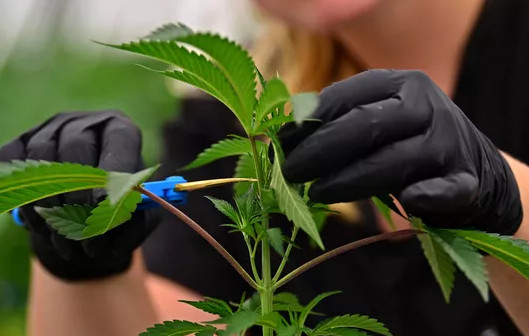
December 17, 2010: The 1st draft of the medical marijuana rules should be released and made available for comment on this date.
January 7, 2011: This will be the deadline for public comment on the first draft of rules mentioned above.
January 31, 2011: The 2nd draft of the rules will be released on this date. Once again, it will be available for informal comment as in the draft referred to above.
February 21 to March 18, 2011: More formal public hearings will be held about the proposed rules at this time, after which the final rules will be submitted to the Secretary of State and made public on the Office of Administrative Rules website.
Some key points about Proposition 203’s effects
-Physicians may prescribe medical marijuana for their patients under certain conditions. “Physician” is not defined in a way limited to normal medical doctors. Osteopaths licensed under Title 32, Chapter 17; naturopaths licensed under Title 32, Chapter 14; and homeopaths licensed under Title 32, Chapter 29 may all be eligible to recommend marijuana for their patients.
-In order to be prescribed medical marijuana, a person must be a “qualifying patient.” A qualifying patient is defined as someone who has been diagnosed by a “physician” (as defined above) or having a “debilitating medical condition.”
-Debilitating medical conditions include:
• Cancer, glaucoma, HIV positive status, AIDS, hepatitis C, amyotrophic lateral sclerosis, Crohn’s disease, or agitation of Alzheimer’s disease or the treatment of these conditions.
• Any other medical condition or its treatment another by the Department of Health Services consistent with Section 36-2801.01.
Comparison to California’s Medical Marijuana Law
The Arizona law is by no means the same as the law in California. There are certainly some differences between the two, though in some respects they are comparable.
Similarities:
• Both laws, as a practical matter, allow for broad discretion on the part of a physician to prescribe marijuana to patients who suffer from pain. In the Arizona law, “severe and chronic pain” is the legislated standard. In the California law, any “chronic or persistent medical symptom” that substantially limits the life of the patient to conduct one or more major life activities as defined by The Americans with disabilities act of 1990, or that if not alleviated, will motive serious damage to the patient’s physical or mental safety, qualifies.
• Each law has a variety of diseases that measure mechanically thought of qualifying diseases for the prescription of medical marijuana. This embrace, however, doesn’t seem to be restricted to, AIDS, cachexia, cancer, glaucoma, persistent muscle spasms, seizures, and severe nausea.
• Each law requires using an identification card by means of those who have been prescribed medical marijuana after the cardholders have gone through an initial application process in which the use of the drug has been endorsed by a physician.
• Both states do not factor in the unusable portion of the marijuana plant in determining the maximum weight of marijuana that is permissible for possession by a cardholder.
Differences:
• Even though the guidelines have no longer been finalized, the Arizona law seems as although it is going to be regulated on the state level and therefore uniform across Arizona. The California law, however, is regulated significantly on the municipal level, and therefore the rules around dispensaries can vary greatly from one municipality to the next.
• The Arizona law provides a broader spectrum of people who are considered a “physician” for the purpose of prescribing medical marijuana. In California, only medical doctors and osteopaths are considered to be physicians. In Arizona, in addition to medical doctors and osteopaths, naturopaths and homeopaths will also be permitted to prescribe medical marijuana.
• In California, patients or their caregivers may grow marijuana plants in lieu of using a medical marijuana dispensary. In Arizona, patients may only grow marijuana or designate someone else to do so in lieu of visiting a dispensary on the condition that there is no dispensary operating within 25 miles of the patient’s home.
• The maximum possession limit for marijuana in California is eight ounces per patient, whereas the limit is only 2.5 ounces per patient in Arizona.















